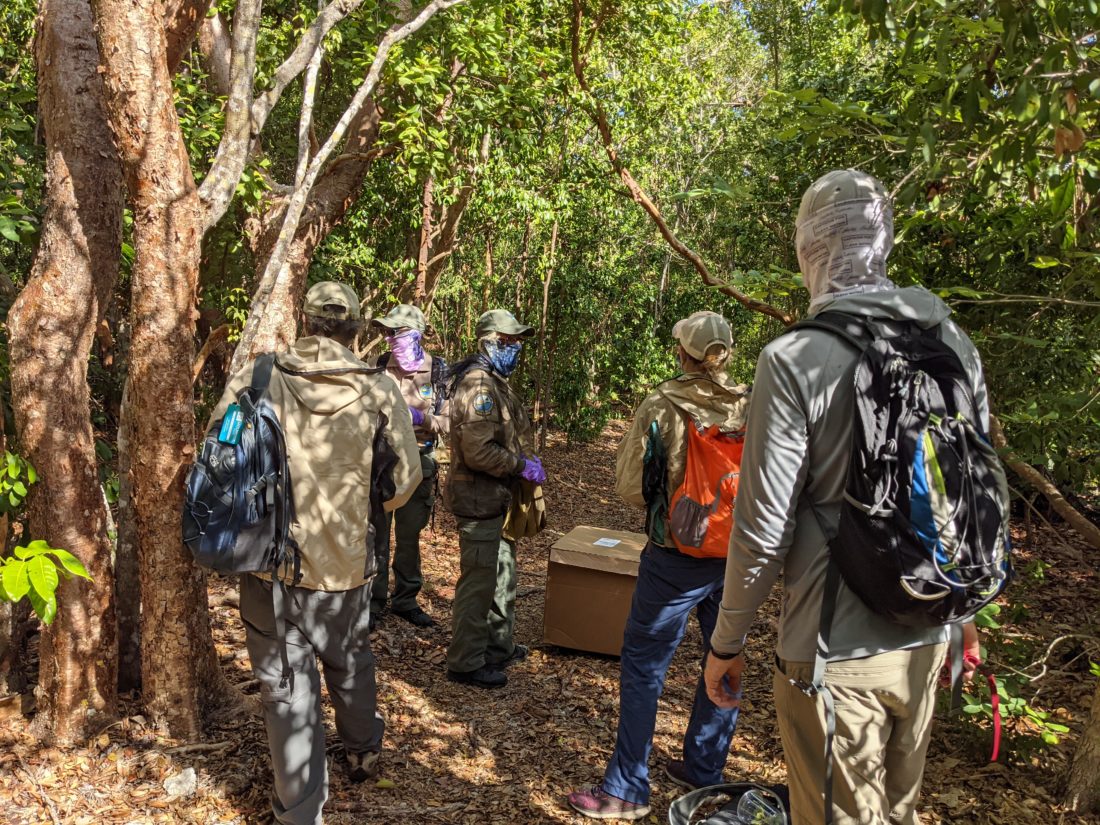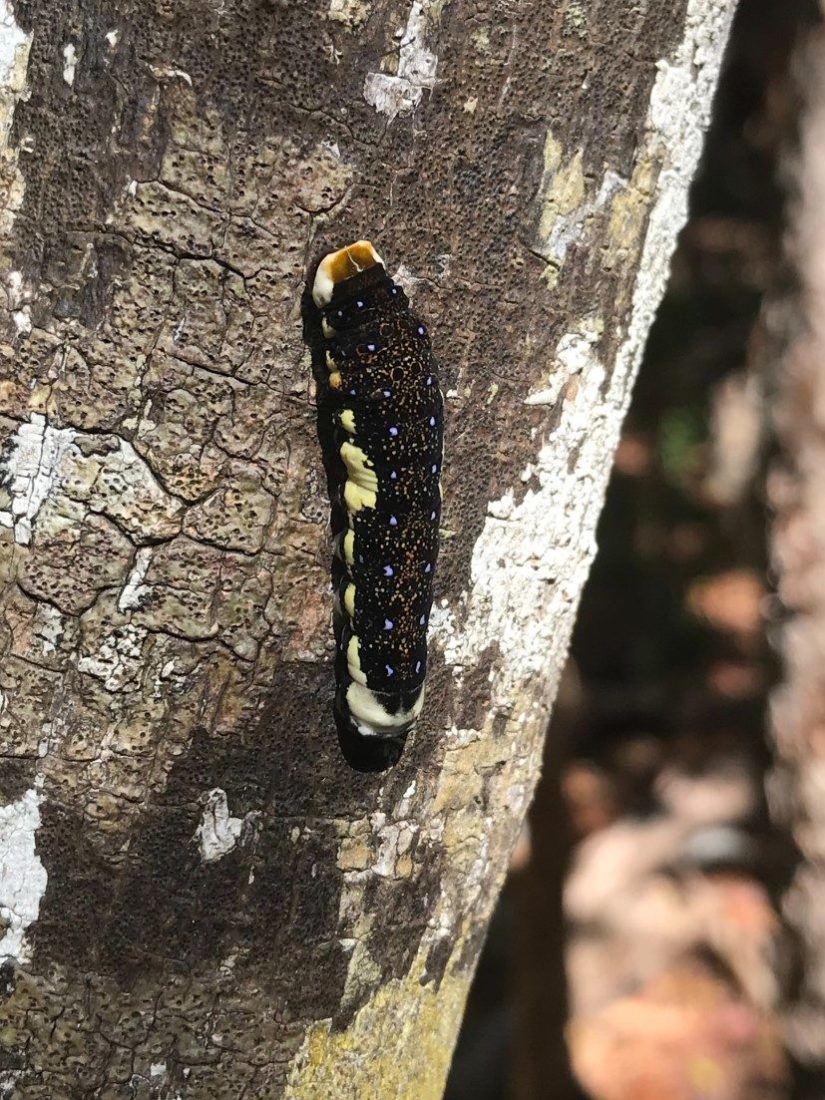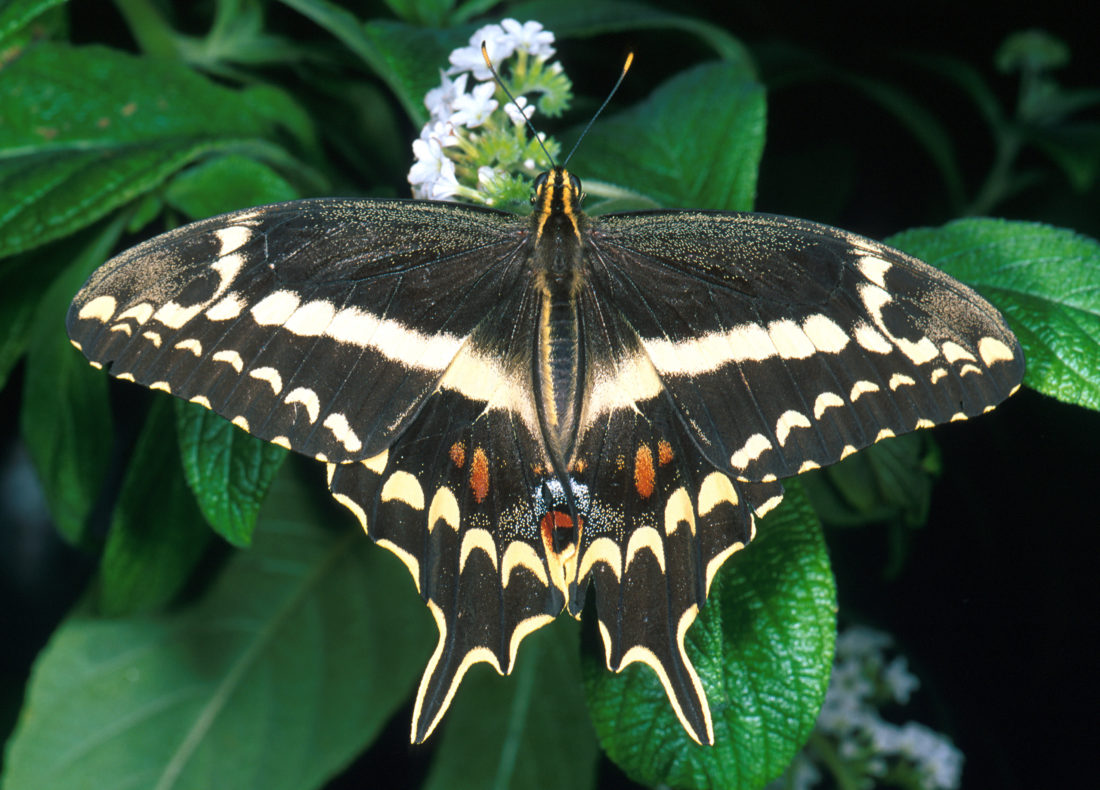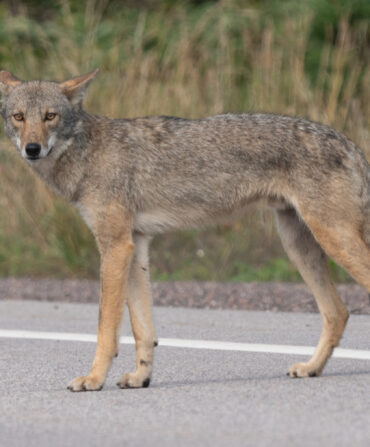“This is a charismatic butterfly that acts like a hummingbird,” says Jaret Daniels, the curator of the McGuire Center for Lepidoptera and Biodiversity at the Florida at the Museum of Natural History in Gainesville. “They can fly backwards, and they’re just beautiful to watch.” Large and dark with a striking yellow pattern dashed across its elegantly tapered wings, the Schaus swallowtail is one of the most endangered butterflies in North America. The butterflies are most active in early summer, and Daniels and his team have been hard at work trying to bring the population back from the brink.
Schaus swallowtails occupy an extremely specific, and uncommon, habitat: tropical hardwood hammocks, a type of hardwood forest found on the coral islands of Florida’s Key Largo and Biscayne National Park. “It’s dense, and it’s dark,” Daniels says. “What little soil there is is uneven and difficult to walk on. It’s hot, and there are literally tens of thousands of salt marsh mosquitoes.” The butterflies’ limited range means that they’re in almost constant danger from threats to their habitat—in addition to shifts from climate change, a single hurricane could wipe out the remaining population. (Hurricane Andrew in 1992 nearly did.) In 2012, the numbers were plain scary: A survey turned up just four butterflies left in the wild.

Since then, in addition to collaborative work restoring habitat, Daniels has led an intensive breeding program at the McGuire Center to keep the species alive. He and his team maintain the butterfly at all stages of its life cycle, and the lab can get pretty crowded. “We’ve got adults flying around, we’ve got larvae, and we’ve got pupae in the queue to emerge,” he says. The goal for these individuals is reintroduction, and this June, in conjunction with the Florida Park Service, Daniels released 140 Schaus swallowtails into Lignumvitae Key Botanical State Park in the hopes that they will get a foothold. The release consisted of adults, pupae (chrysalises), and full-grown caterpillars. The brown caterpillars, with splotches of cream and aquamarine, grow to three inches long and must be carefully hand-placed on torchwood, the species’ only known host plant.

Though the releases themselves are the culmination of years of habitat restoration work and breeding, perhaps the most exciting sign of hope came in the form of a butterfly already on Lignumvitae Key. “Some of our wonderful community scientist volunteers and Florida Parks staff sighted a fresh female Schaus,” Daniels reports. She was an individual descended from last year’s releases—and proof that introduced butterflies are living in the wild and breeding successfully.
From four in 2012, this year’s surveys indicate that there are now approaching 1,000 Schaus swallowtails in the wild—a number that Daniels hopes will continue to grow. “Found nowhere else in the world, these butterflies help represent what makes wild Florida so special,” he says. “We want to ensure that they, and the highly specialized habitat in which they live, survive for future generations to enjoy.”









